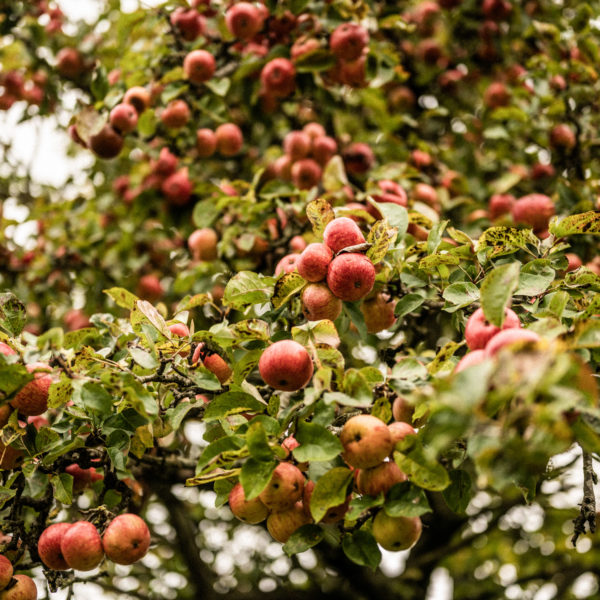Cider is a beverage which has enjoyed a revival in Britain in recent years, with the number of local producers increasing and the quality of the drink improving. Britain is the leading country in the consumption of cider and 56% of apples grown in Britain go into making cider. Cider is strongly associated with the West Country, with several producers being located in Somerset, Devon and Dorset, including ourselves in East Devon where we make sparkling vintage ciders and fruit ciders.
History of Cider in Britain
It is thought apples were brought to Britain by the Romans and later by the Normans – who planted orchards and advanced apple pressing technology – after being grown and cultivated in Asia and Europe for thousands of years. There has also been a distinction between cider apples, cooking apples and dessert apples in Britain since before the Tudors.
Over the centuries there have been fluctuations in the popularity and growing of cider apples around Britain; better infrastructure helped cider producers sell to a wider market, but then bad orchard management lead to declines in production. In the 19th and 20th centuries, commercial cider producers expanded, using tannin-rich flavoursome apples and overtaking the small farms growing heritage cider apples.
However, there has been a focus on improving orchard management techniques to increase yield to match consumer demand, and in the 21st century, a cider renaissance was underway, due to better advertising and changing trends in alcohol consumption.
Cider Apples
There are over 7,000 varieties of apples and hundreds if not thousands are cider apples. Cider apples are not good for eating or cooking but are perfect for turning into the popular drink. At Lyme Bay, we use British varieties such as Dabinett, Kingston Black and Yarlington Mill. Like the grapes used to make wine, cider apples all have their own distinctive taste and characters. In Britain, cider apples have different classifications such as bittersweet and sharp, depending on how acidic or tannic they are.
The variety of cider apples can help determine the style and taste of cider; still, sparkling, dry or sweet. In the West Country, scrumpy cider is made from a blend of cider apples or a single variety and offers a strong, full-bodied character. In Eastern regions in Britain, cider will often include a blend of cider, dessert or cooking apples resulting in a sweeter drink.
Making Cider
To call something cider in Britain, it needs to be made from 35% apple juice. The juice doesn’t have to be made from cider apples and can even be made from concentrated apple juice. The other 65% can be water, colourings, flavouring etc. Most of the cider available has been made on an industrial scale, is produced all year round and can be made, start to finish, within three weeks. At the other end of the scale, independent and artisanal cider will use 100% apple juice and implement traditional methods to make cider.
The traditional methods for making cider starts with the apples. Once picked, they are left to mature for about a week and then tipped into a scratcher, which crushes the apples into a pulp, or ‘pomace’. Next, the pomace is crushed to extract the juice, which is done in a cider press. Several types of presses can be used, with the traditional type being a pack press, where a layer of pulp, several inches deep, is poured onto a hessian cloth in the frame of the press and then covered by the cloth. Several layers of hessian cloth filled with pomace are added into the frame until it is full. The press is then pushed down onto the layers, with the juice running into a trough below.
The apple juice is left to ferment over winter in barrels with the bung removed. Yeast is not added, as traditional cider making relies on wild yeasts. The fermenting process continues for several weeks, during which the barrel is topped with more cider. When fermenting is over, the bung is replaced, and the cider is matured from anywhere between a few weeks to several months.
Cider and Food
There are those who argue that cider pairs with food possibly the best of any drink. There are almost endless combinations of cider and food, as well as using it as an ingredient in many dishes. For example, a cider rich in tannins are found to pair well with meat and strong cheeses, dry cider matches well with savoury food, sweet cider works mainly with desserts and ciders that are more crisp and acidic work perfectly with fish and other seafood.
The relationship between cider and food – coupled with growing popularity for the beverage – has also created several festivals and events. Throughout the year, there are events across the country where visitors can sample all sorts of craft ciders, learn about the process to make them, tuck into tasty food and enjoy a variety of live music.



